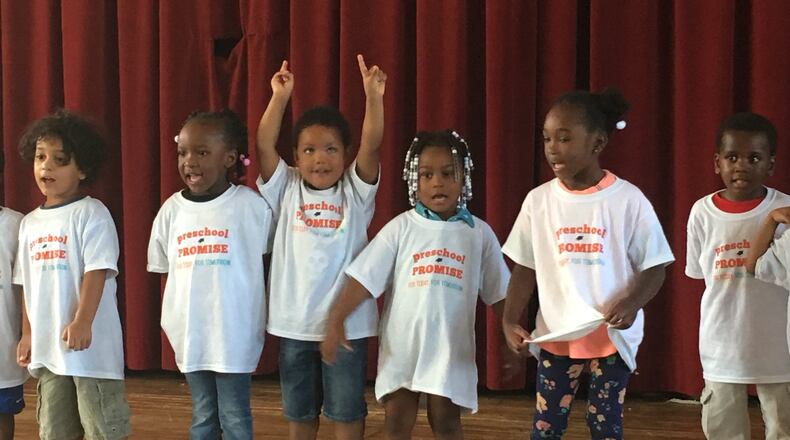But 28 percent of Dayton 4-year-olds attended no preschool at all last year, despite thousands of dollars in available tuition support.
RELATED: Fewer children “ready for kindergarten” in 2016-17
Since 2017-18 was the first year of the fully funded program, Preschool Promise board chair Deborah Feldman said the team will use this as baseline data to inform next steps. She said the group is “very pleased” with early student gains and commended local preschools and partners for their hard work to improve quality.
“We are committed to addressing the racial gaps and to finding new ways to reach families who aren’t yet sending their children to preschool,” Feldman said. “We will keep working hard to make sure all of our children can attend high-quality programs.”
Dayton voters in 2016 approved a 0.25 percent income tax hike, with $4.3 million per year of those funds going to Preschool Promise. The agency uses the tax money for family tuition assistance and preschool staff training in Dayton, expanding on efforts started by Montgomery County. Research suggests high-quality preschool produces academic gains for low-income students.
RELATED: Preschool group to spread assistance to more families
Dayton Mayor Nan Whaley said she is “really, really pleased” with the first full year, especially with the organization’s “high standards for themselves,” and willingness to adjust approaches based on what they learn, with no ego or politics.
Preschool Promise has focused the past two years on racial achievement gaps, as black children continue to start school academically behind and struggle to make up ground as years go on.
The agency uses the Bracken assessment to measure preschoolers’ basic letter/number/shape-type knowledge and the Minnesota EFS for their “executive function” or ability to control behavior, follow instructions and work with others.
From fall to spring in 2017-18, Preschool Promise 4-year-olds improved their scores on both tests, narrowly missing the national average on the overall Bracken score, and exceeding it on one subtest. But the gap between white and black students’ scores increased in that time, narrowly on the Bracken and significantly on the MEFS.
RELATED: Preschool Promise working on barriers to school quality
The report said teacher training has been very effective, and Robyn Lightcap, executive director of Preschool Promise, said students made “more than an expected year’s gain” last year on the Bracken assessment.
“The good news is that everyone’s going up (on Bracken), black kids and white kids, but we see that there’s still a really big gap, and we’re not, in general, closing that gap,” Lightcap said.
She said the Minnesota “executive function” test was worse, as black students made negligible gains on those skills, significantly widening the racial gap. She said Preschool Promise would consider a “radical increase in focus” on executive function training for teachers.
“We clearly have much more work to do … making sure our African-American kids are getting the experiences they need to develop those executive function skills,” Lightcap said. “Those skills are actually the best predictor of long-term success. … “I think we have to find something radical to address these racial inequities.”
RELATED: Preschool funding approved — $34 million over 8 years
There was also a racial gap in attendance, as 66 percent of white students had attendance of 90 percent or better, while 62 percent of black girls did, and only 52 percent of black boys. Families who signed up for the “star attendance” financial incentives have gotten kids to school more often.
Charmaine Webster, Preschool Promise’s director of marketing, said the group is restructuring its outreach team, including the imminent hiring of a full-time director. She cited recent stronger outreach to charter school families, and at underserved apartment complexes, adding the program hopes to see slight growth in participation this year.
Webster said Preschool Promise has had some difficulty getting Hispanic families to register, with some unwilling to file paperwork while immigration enforcement has increased.
Lightcap said Preschool Promise has far more students actively attending programs than at this point last year. But she said that may only be due to a smoother enrollment process and agreed with Webster that only a small increase in actual enrollment was likely this year.
The program has listed a long-term goal of having 70 percent of eligible Dayton 4-year-olds enrolled. Lightcap said Preschool Promise will consider creative ways of improving enrollment, especially in East Dayton where numbers are low.
That could include sending “traveling classrooms” into low-enrollment neighborhoods, or having sessions where parents unsure of signing up their children can come to school with the child and work with a teacher on educational activities.
About the Author

